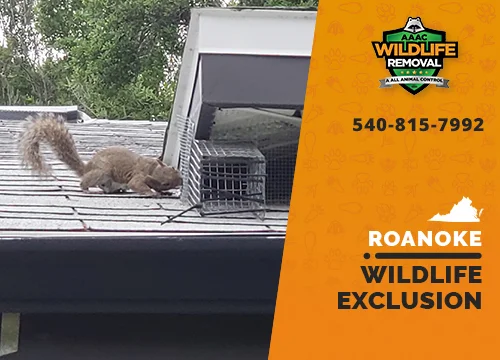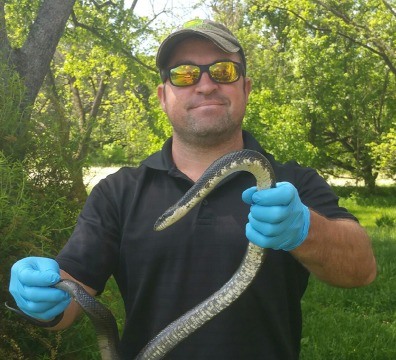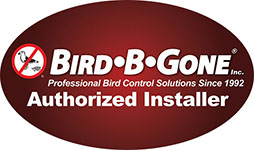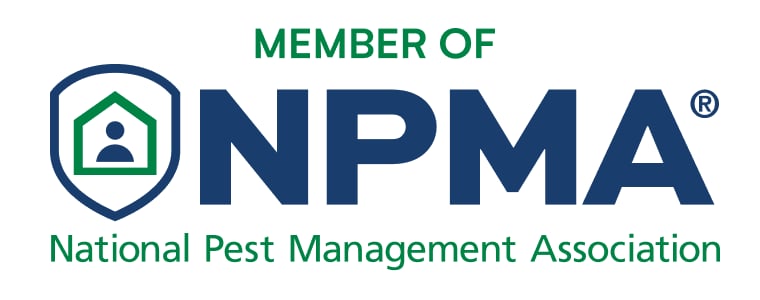
What is Wildlife Exclusion?
Exclusion means sealing off entry points for animals to your home or business in a way that stops them getting in. This is easier than trying to exclude wildlife by yourself. You can seal all entry points so that they cannot come in.
AAAC Wildlife Exclusion Services offers humane exclusion services for any wildlife that may pose a threat to your home or business. We are experts in exclusion and can safely and effectively exclude your problem animals.
We can help if you have animals living in your home or within the walls of your property. We will seal up any entry points found by animals, including holes in floors or cement cracks around pipes.
How We Conduct Wildlife Control and Exclusion Services
Some nuisance wildlife has managed to sneak into your home or office. Now you want to trap them, and maybe even get rid of them. However, trapping alone won’t fix your problem. Although you may be able to eliminate the first infestation, if you don’t do wildlife exclusion, you can only wait for the next group to arrive. Here are the steps taken to stop the infesting cycle using animal removal techniques.
Find and seal all entry points:
We first look for all the possible access points animals might use. This might include holes in floors, cement cracks around pipes – basically anywhere an animal might find entry into your home or business. This includes holes in roof tiles, soffits, and fascia. Then, we block off any access points. In some cases, we achieve this by drilling metal or rubber grommets on top of the hole, which also creates a tight seal. In other cases we may use wire mesh for plugging the holes. Next, cover your hole with a waterproof covering. It will keep it safe from the elements. Lastly, we need to wait and see if there are any other openings that could lead animals inside your building before sealing them off as well.
Exclude wildlife using a trap or one-way door
Top pest control specialists will locate the main entrance used by wild animals to gain entry and exit to your home or place of business. We intentionally leave the hole open to allow us to use it to exclude your nuisance wildlife. Once we have identified the hole, we can either use a live trap or a one-way door.

One-way doors: If you don’t want the animal to be killed, a one-way door might be an option. These doors are specifically designed for animals that allow them to enter but not go. To use one of these, we carefully open a hole in the door that is just big enough for the animal to fit through but too small to turn around and come back out of. Next, we place the bait on the opposite side of the hole and close it. The animal will then go in. The door can’t be opened from this side so they won’t be able to turn around and go back once they reach the bait.

Live traps: For a live trap, we set traps near any openings in the roof or outside that might be used by animals to get in. We can lure the animals into our trap by placing them near these openings. We place bait in the trap and once an animal gets inside, it’s caught! A cage trap may be necessary if the wildlife being trapped is larger like a raccoon or an opossum. This is a wire mesh trapping device that will keep the animal inside, then technicians from our wildlife removal company will remove it from your home
Popular Access Points for Animal Entry
To prevent future wildlife infestations, a proper wildlife pest control service operator must check all of the most common ways that squirrels, rodents, bats, rats, mice, raccoons, birds, and other wildlife can use to access your home. AAAC Wildlife Removal is quite thorough. But, here is a quick guide of the most commonly used access points by animals to get inside your house.

Ridge Vents
Bats typically enter attics through the ridge vent, which is a metal strip that runs along the edge of the roof. We can use a Ridge Guard to seal any vent openings. After sealing the vents, we can perform a complete roof repair in order to make your home animal-proof. If you have pictures of your roof, we will be able to give you a better idea of if your ridge vents are where the critters are getting in.

Gable Vents
Raccoons, squirrels, or other animals often enter homes through the gable ventilations. These vents provide airflow to your attic during hot weather. They may be covered or have a small flap which can be easily pried open with an animal’s paw. Wire mesh can be used to secure the vents. We can also secure the vent flaps and replace any rotted wood that may have allowed an opening for critters to enter in the first place.

Dryer Vents
Dryer vents can be a common entryway for rodents or birds. If they are migrating to find shelter or food, rodents will likely chew their way into your house through dryer vents. The airflow through dryer vents keep the birds alive so we need to seal off any vent openings and secure the areas with metal mesh.
Birds like dryer vents because of the warm airflow moving through them. As birds use dryer vents to access nesting spaces, you may see an increase in your electricity bills. Installing common vent guards will help you prevent this.
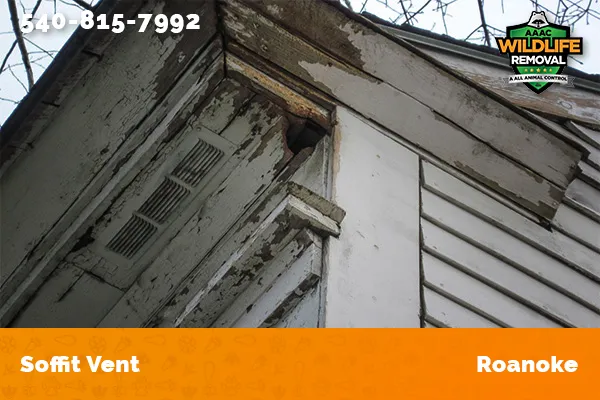
Soffit
Raccoons and squirrels love to get inside your attic through a damaged soffit. An experienced wildlife removal company will repair any damaged wood that has allowed wildlife to enter your attic and secure it with closures or metal mesh. Your soffit will look good as new and your rodents will be gone.

Fascia
Wild animals just love the fascia on a house. If your roof had gutters, the fascia would cover the gutter under your roof. It is a board that covers the gap between your roof edge and your gutters. To stop wildlife from using the access point, we seal all gaps with metal mesh, replace any rotten wood, then cover it with a metal covering that allows water to flow freely but prevents animals from entering.

Eaves
Raccoons love to get into your home through the eaves. The edges of your roof that meet the sides of the house are called eaves. To keep wildlife out, our technicians can use metal mesh to close any gaps. Or, we can install special guards that prevent animals from entering.
The Chimney
A chimney is one of the most common entry points for animals into a home. If a critter is already inside, we can simply remove and replace chimney liners to get rid of the animal.
Bats, squirrels, and raccoons love to find a warm place to sleep inside the chimney. Due to venting and fire hazards, this is often a difficult access point to inspect. We will often use flameless heat detection cameras to figure out where the animals are hiding in order to remove them safely, or we can just remove the old liner and cap and then replace them.

Cracks in the foundation
Foundation cracks can be a favourite entry point for rodents. Foundation cracks can be filled with a cement compound. This will prevent rodents from entering the walls. This type of repair is not only animal-proof, but it also makes your home look better from the outside as well!

Exposed pipes
Exposed pipes are an easy way for rodents to gain entry into your home. You can protect your home from rodents by securing any gaps with metal mesh and covering up any pipe openings with a cap. This will stop animals from entering your home again, while still allowing for air movement.

Wildlife Damage Repair Service
After you have completed your wildlife exclusion, it is important to repair any damage that rodents/squirts, bats/birds, rodents/rats, mice, rats, or other pests may cause. Many wild animals will make their entryway into your home bigger by gnawing it with their teeth and by scratching with their claws. Some of the damage can be quite ugly.
Our wildlife damage repair services are top-notch among pest control providers. We have the contracting and carpentry experience needed to repair even the most complex forms of wildlife damage. Our contractors have the ability to replace damaged drywall and insulation. The contractors have the skills to quickly and efficiently repair your home to minimize future animal damage.
Learn more about Wildlife Damage Repair

Attic Restoration
Your attic may be the victim of a horrendous infestation that could leave it contaminated with urine, feces, and blood. This can create quite the stench as well as a fit environment for mold growth. Our pest control experts will replace any contaminated insulation with materials that have been treated against moisture or odor. We also can replace insulation that is torn or chewed through by rats, mice, squirrels, and other pests by using new material secured to your attic floor with heavy-duty staples. Our attic restoration services will make your attic look brand new!
Learn more about Attic Restoration
Wild Animal Pest Control
Exclusion is a humane approach to pest control. You can humanely trap or encourage wildlife to leave. After their openings have been sealed, they won’t be able to return. This article provides information on how professional wildlife removal services can solve the problems created by wild animals in the house. AAAC Wildlife Removal offers a professional wildlife exclusion service. Call us today!

